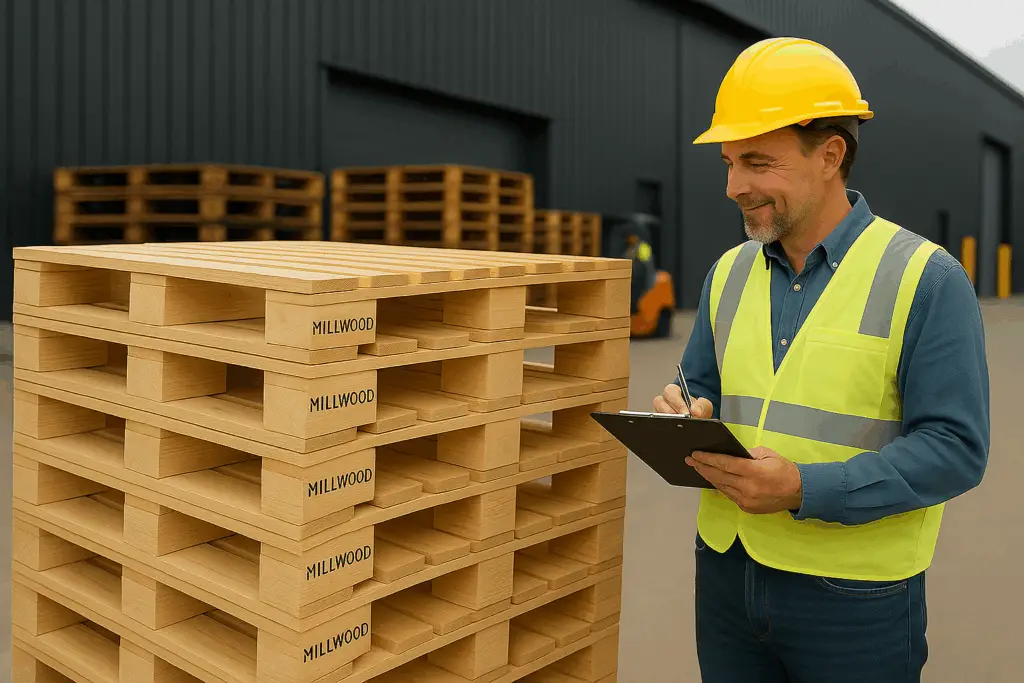Right-Fit Pallets: Not Too Much, Not Too Little — Just Right

The Goldilocks Principle, Engineered for the Real World
We all know the story of Goldilocks and the Three Bears — one option was too much, one was too little and one was just right. That simple idea of balance has surprising relevance in the world of pallets and packaging.
When a pallet is under-engineered, it’s too little — it fails to protect, wastes time, and drives up hidden costs.
When it’s over-engineered, it’s too much — adding unnecessary weight, materials, and expense.
But right-fit pallets — engineered precisely for your product and process — deliver performance, efficiency and sustainability in perfect balance.
At Millwood, we help customers design pallet programs that hit that just-right point between strength, cost and stewardship.
The Cost of an Under-Engineered Pallet (Too Little)
An under-engineered pallet might look efficient on paper. It’s lighter, cheaper and easier to source. But what appears to save money often creates hidden losses — damaged products, rejected shipments and higher overall spend.
A national manufacturer experienced this firsthand. Their pallets couldn’t handle product weight through distribution. On the surface, they saved pennies per unit. In practice, they lost millions in waste and damage.
When Millwood redesigned their program with the right-fit approach, the results spoke for themselves:
- $2 million in annual savings
- 96,000 pallets repurposed each year
- 4,800 cubic yards of wood waste diverted from landfills
A pallet that was “good enough” turned out to be anything but — until the right-fit solution was engineered.
The Hidden Cost of an Over-Engineered Pallet (Too Much)
At the other extreme, over-engineered pallets can be just as costly.
We often see companies using a one-size-fits-all design that’s stronger than most of their loads require. The result? More material, more weight and more freight cost — with no added protection.
Over-engineering can look safe, but it’s actually inefficient. It wastes material and reduces sustainability performance across the supply chain.
The goal isn’t to build the strongest pallet possible — it’s to build the right pallet for the job.
The Power of Right-Fit Pallets (Just Right)
Goldilocks would call it “just right.” We call it engineering balance.
Right-fit pallets are designed around your specific load, environment, and handling requirements. They provide:
- Sufficient strength for the intended weight and distribution environment
- Optimized material use for lower cost and freight efficiency
- Long-term sustainability through reuse, repair, or recycling
Finding that balance doesn’t happen by chance. It happens through engineering.

How Millwood Engineers the Right Fit
For nearly 40 years, Millwood has helped customers design pallets that perform, not just survive. Our process is built on three pillars:
- Design Expertise
Every project begins with understanding your operation — product size, handling method, racking, and transportation. Our engineers use advanced tools like the Pallet Design System (PDS) to tailor each design to your exact requirements. - Testing & Verification
Designs are validated in Millwood’s ISTA-certified Packaging Science Lab, simulating the conditions your pallet will face in the field. This ensures that the “right fit” works as intended before full production. - Sustainability Commitment
From recycled lumber and repair programs to pressed wood, corrugated, and plastic alternatives, Millwood helps customers minimize waste while maintaining performance.
Because the best pallet isn’t defined by how heavy it is; it’s defined by how well it fits.
Why Getting the Fit Right Matters
When your pallet is engineered just right, everything downstream benefits:
- Less product damage and fewer rejected loads
- Lower freight cost through optimized cube efficiency
- Simplified handling and improved safety
- Reduced environmental impact through material savings
It’s not just a pallet decision — it’s a supply-chain performance decision.
Conclusion: From Goldilocks to Good Engineering
Goldilocks found her balance by trial and error. You don’t have to.
At Millwood, we combine experience, engineering, and testing to help customers eliminate the guesswork.
If your pallets are too much or too little, it’s time for a solution that’s right-fit — and just right.
Ready to find your right-fit pallet?
Upload your specs or connect with a Millwood engineer today to start designing a solution that performs in every sense of the word.




